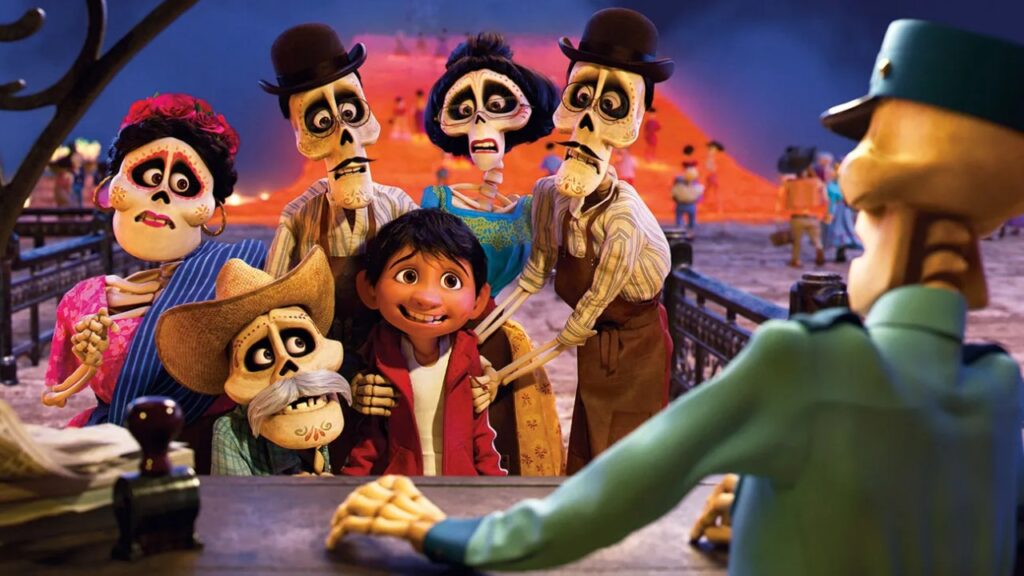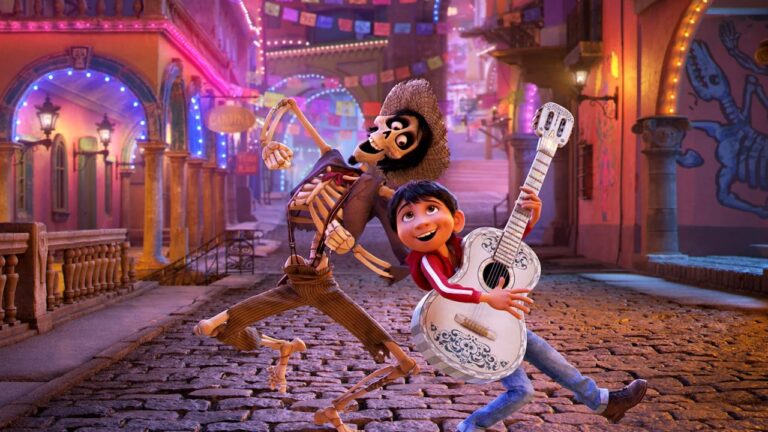Pixar’s 2017 ‘Coco‘ is said to be a remarkable and masterful exploration of memory, identity, and familial bonds, which is based on the theme of the famous luminous spectacle of Mexico’s Day of the Dead, Día de los Muertos. The film apparently negotiates a rare equilibrium between visual exuberance and emotional subtlety, revealing storytelling as a medium capable of both intimate reflection and universal resonance.
The main storyline centers on Miguel Rivera, a twelve-year-old boy, whose ardent love for music exists in direct tension with his family’s stringent interdiction. This conflict outstrips mere plot mechanics, as it functions as a prism through which the film interrogates the mechanisms by which families transmit history, values, and intergenerational trauma. Miguel’s descent into the Land of the Dead is simultaneously an imaginative odyssey and a profound act of self-discovery. The afterlife is rendered with an astonishing vitality of marigold bridges, incandescent skeletal figures, and a pulsating cityscape, yet the visual ingenuity never eclipses the story’s emotional gravity.
Coco is Both Heartfelt and Universally Resonant

Coco navigates a very delicate tonal balance, as the movie introduces figures such as Héctor, who provide levity without diminishing narrative stakes, as their comedic misadventures refract the film’s view on loss and remembrance. Miguel’s reconciliation of musical passion with the fraught legacy of his family unfolds with a narrative subtlety that eschews banalities, and we see how the screenplay confronts betrayal, regret, and the fragility of memory with candor and dignity, presuming a perceptive we are capable of discerning nuance.
The film’s cultural fidelity is exemplary, as every mise-en-scene, from the lively streets of Santa Cecilia to the meticulously crafted papel picado and marigold garlands, conveys an acute sense of place and history. The engagement with Mexican cultural advisors ensures that rituals, music, and architectural details resonate with authenticity, and Coco thereby outperforms these representations, attaining a form of celebratory verisimilitude that is both joyous and respectful.
Musically, the film attains a rare sonority, as Michael Giacchino’s score, suffused with authentic Mexican instrumentation, furnishes the narrative with profound emotive resonance. The Academy Award-winning “Remember Me” operates on multiple registers, its oscillation between playfulness and heartrending pathos epitomizing the film’s philosophical core, that is, memory as the vehicle through which love endures beyond mortality.
Coco’s Brilliance Lies in Its Honest Exploration of Grief and Reconciliation

Ultimately, Coco’s brilliance lies in its humanity. The skeletal denizens of the Land of the Dead, despite their fantastical form, are imbued with depth, vulnerability, and humor. The film treats grief, familial strife, and the vicissitudes of life with unflinching honesty, yet it simultaneously cultivates wonder, reconciliation, and joy. It demands a contemplative engagement, rewarding viewers with subtle emotional shifts and insights into the bittersweet impermanence of existence.
Coco functions as both elegy and celebration, an introspection on the passing nature of life and the permanence of memory. Each viewing discloses new layers of craft, narrative sophistication, and emotional nuance. In an era often dominated by franchise monotony, Coco itself is an exemplar of cinematic artistry.




